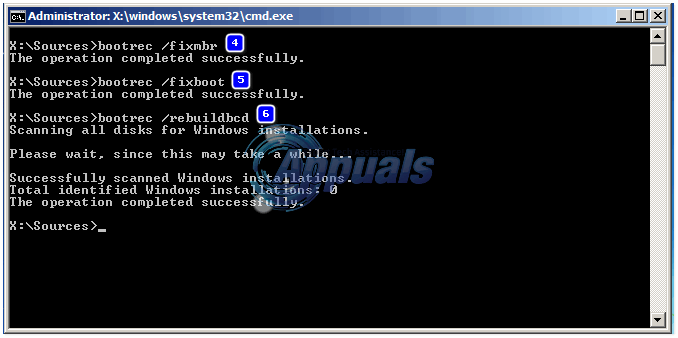FIX: Non System Disk or Disk Error Message on Startup
There are an abundance of error messages that computer users may see immediately after their computer boots up and tries to get into its Operating System. One of these error messages is one that states “Non system disk or disk error”. This error message presents itself before your computer gets into its Operating System, which means that this error message renders your Operating System inaccessible, basically reducing your entire computer to an expensive paperweight for the time being.
“Non system disk or disk error” points towards the drive a computer is trying to boot from not having any boot files or another issue pertaining to the drive. However, this error can also be caused by loose or faulty SATA/IDE cables or your HDD not being configured as the first medium your computer tries to boot from or anything in between. This problem can be resolved and the “Non system disk or disk error” error message can be gotten rid of, and the following are some of the most effective solutions that you can use to try and do so:
Solution 1: Remove all non-bootable media from your computer
First and foremost, remove any and all media from your computer that the computer cannot boot from. This includes DVDs, CDs, USB flash drives and floppy disks. Make sure that your computer’s DVD/CD drive is empty, the floppy drive (if it has one!) is empty and that no USB flash drives are inserted into any of the USB ports, and then restart the computer and check to see if the problem still persists. If you are still facing the problem, try the next solution.
Solution 2: Check on your HDD’s IDE or SATA cable
A loose or faulty SATA cable (or IDE cable on older HDDs) can make it tougher for Windows to detect, recognize and read from an HDD, giving birth to this problem. Open your computer up and make sure that the cable connecting the HDD to the motherboard is fastened securely and restart your computer. If this doesn’t work, replace the cable entirely and check to see if that resolves the issue. If the issue still persists, you can safely rule the SATA or IDE cable out as a probable cause of the issue.
Solution 3: Make sure that your computer’s HDD is at the top of its boot order
Restart your computer. On the first screen that you see when your computer boots up, press the key that will allow you access to your computer’s BIOS This key varies from one motherboard manufacturer to the other and can be found in both a computer’s user manual and the first screen that it displays when it boots up. Once in the BIOS, peruse its tabs looking for its boot order.
Once you find your computer’s boot order settings, highlight them and press Enter, and then make sure that the Hard Disk Drive you are trying to boot from is at the very top of the list. If it isn’t, set it at the top of the list, save the change, exit the BIOS and restart the computer.

Solution 4: Repair your HDD’s boot sector, master boot record and BCD
If the “Non system disk or disk error” error message is showing up because your Hard Disk Drive’s boot files have become damaged or corrupt, repairing the HDD’s boot sector, master boot record and BCD (Boot Configuration Data) should fix the issue. To do so, you need to:
Insert a Windows installation disc or Windows system repair disc into the affected computer, restart it and then boot from the disc. To boot from the disc, you will need to set your CD/DVD drive as the first boot device in your computer’s boot order. Choose your language settings and configure other preferences. If you are using an installation disc, you will be taken to a screen with an Install now button at the very center. At this screen, click on Repair your computer in the bottom left corner. If you are using a system repair disc, move directly onto the next step. Choose the Operating System you want to repair.
You can also check out our detailed guides on how to start windows 7/vista in repair/install mode and how to start windows 8/8.1 and 10 in repair/install mode.

At the System Recovery Options window, click on Command Prompt.

Type the following commands into the Command Prompt, pressing Enter after typing in each one:
fixboot fixmbr rebuildbcd
Remove the installation disc, restart the computer and see if the problem has been resolved.
Note: If you are trying to fix this issue using this solution on Windows 7 or Vista, in the Command Prompt, use the following commands instead of fixboot, fixmbr and rebuildbcd:
bootrec /fixmbr bootrec /fixboot bootrec /rebuildbcd

Solution 5: Run diagnostics on your HDD to determine if it has failed or is failing
If none of the solutions listed and described above have managed to fix this issue for you, your last option is to run a series of diagnostics tests on your HDD. Running diagnostic tests on your HDD will allow you to determine its health status and whether or not it has failed or is failing. To find out whether or not your HDD is failing or has failed, use this guide.
If you end up determining that your Hard Disk Drive has already failed or is failing, the only viable course of action will be to replace it with a new one.